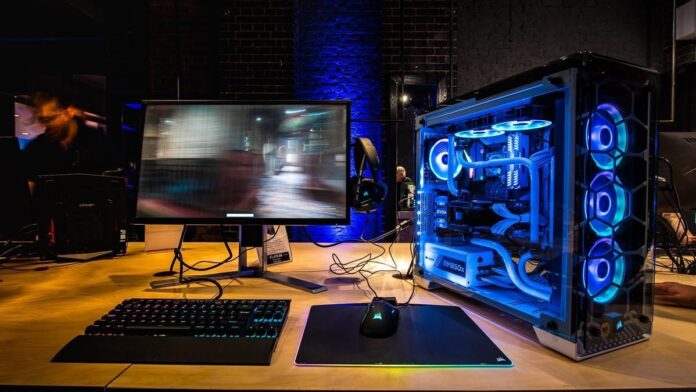Gaming monitors are specially designed to take advantage of the maximum output of your device’s graphics. These devices display the result of your computer’s image rendering and processing.
A 144-Hz gaming monitor isn’t only popular due to its display technology but also for a range of functions like resolution, variable refresh rates, long battery life, etc.
Let’s highlight how a 144Hz gaming monitor can make your gameplay realistic:
Resolution:
Resolution is a crucial feature of any monitor. It measures the width and height of the screen in terms of pixels, or “picture elements.” The pixels counted in these measurements are usually rendered.
As you increase the display resolution, picking individual pixels with the naked eye becomes more difficult. 144Hz gaming monitors offer real estate scenarios to work with. This means you have large workspaces on which to arrange the windows.
Native Resolution:
Monitors can change their resolution. Modern screens have a fixed number of pixels, defining their native resolution capacity.
Scaling:
This technology comes with ultra-high-definition text interface elements like buttons that can start to look small. This is especially true for small screens when using programs that don’t automatically resize their text and UI.
Refresh Rates:
Refresh rate refers to the frequency at which your entire screen refreshes the image. High refresh rates make images and screen updates smooth. This is ideal for competitive players to track moving enemies in a first-person shooter. This technology also creates a screen that is more responsive as you scroll down a webpage or open an app on your phone.
A high refresh rate of 144 Hz on gaming monitors makes it easy to track moving objects with your eye.
Variable Refresh Rate Technology:
Variable refresh rate technology from companies such as Nvidia and AMD is a must-have technology for any gaming monitor. This technology allows your monitor to refresh the screen only when your graphics card is ready.
The technology automatically syncs the refresh rate of your monitor and frame rates.
So, make sure that your system consists of either G-Sync, FreeSync, or VESA Adaptive-Sync technology.
Less Input Lag:
Input lag refers to how long it takes for your inputs (mouse clicks or keyboard presses) to be registered by your computer or gaming console, which can significantly reduce response time in games where every millisecond matters (such as first-person shooters).
With a 144Hz gaming monitor, input lag becomes almost non-existent, making it ideal for gamers who want lightning-fast reactions from their setup without having to worry about input lag causing problems during intense gaming sessions!
The good news is that many modern 4K displays have low input lags designed specifically for gamers, so no matter what type of game you’re playing, you won’t have any issues with laggy inputs ruining your gameplay session!
Longer Lifespan:
Since 144Hz gaming monitors use less energy than other types of displays, they also tend to have longer lifespans, which means that gamers can expect their expensive investment in high-end hardware and peripherals to last longer than with other types of displays!
Brightness and HDR:
Brightness and HDR remain two primary aspects that can influence image quality on screen. A monitor with in-built HDR compatibility offers gamers a much better color image. Simply put, it provides brighter whites and darker blacks, as well as more vivid colors.
Typically, 144Hz gaming monitors offer brightness in the range of 40% to 60%, which is considered ideal for competitive gaming.
Color depth:
Color depth is the information that is used to show the color of pixels on the screen. Generally, with a 144Hz gaming monitor, you get 8-bit color depth, which can increase your gameplay.
With the changing needs of modern games, there are now almost 10-bit color gaming monitors available that offer more than 1.012 tons of primary colors. They can offer the best experience to gamers. Gamers can explore realistic graphics.
Games with higher color depth can better represent the textures of objects and surfaces. This means that textures will appear more detailed and true to life, enhancing the overall visual quality of the game.
Color depth plays a vital role in rendering lighting and shadows realistically. With greater bit depth, the subtle variations in color that occur in different lighting conditions and shadow areas can be accurately represented. This enhances the visual impact of lighting effects and makes shadows appear more convincing.
Last Words:
Serious gamers always want to enjoy the latest adventurous gaming titles. But with the changing needs of the gaming industry, modern games demand a lot, such as appropriate response time, long battery life, ultra-advanced processors, high refresh rates, and so on.
With gaming pc at 144 Hz, you get a combination of all these features that make you a smart next-gen gamer. This also gives you an edge in terms of other gaming competitors, which mainly happen in multi-player games.


